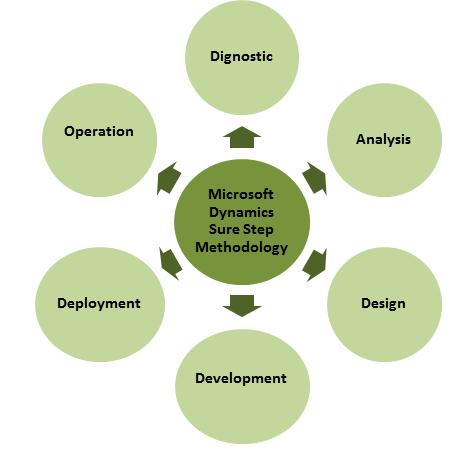Sure Step Methodology - Analysis Phase
Megha Kainth, 19 May 2011
The second phase in Microsoft Dynamics Sure Step Methodology is the Analysis Phase. Whereas the Diagnostic Phase involved high-level scoping of the project, the Analysis phase is all about detail. We must thoroughly analyse the existing and/or planned business processes and procedures of the Client. We must understand data security requirements. We need to know what information must be retained and in what format. We need to know what operations are high-use and therefore may require extra work to in order to minimise operator time. And we need to know of any other Client preferences or requirements. Data migration and training is also addressed. In short, we need to search out all the detail required to design the software solution. We frequently use Analysis templates and checklists to ensure nothing is overlooked.

The Analysis Phase will be conducted differently depending on the situation. For example the project may be an upgrade of an existing functioning system. The existing system may be relatively low-tech (e.g. based on spreadsheets and paper forms) or high-tech (e.g. using a bespoke software solution that is not sufficiently versatile to accommodate the changing needs of the organisation). In such cases, the processes are well understood and most of the information required can be gathered readily. Sometimes the project will be for a new system which hasn’t been completely tried and proven. In such cases, more effort is needed to extract the detail necessary for solution design, and the Analysis phase may become iterative.
The main output from the Analysis phase is the Solution Requirements Document (SRD). This document reflects the information gained in the Analysis phase and states the detailed requirements. It should be readable by Client Managers and it is essential that the Client does read and understand it. This is the best time to add new requirements or query the way the system will work. At this stage, no design or development cost has been incurred, so nothing is wasted. Changes made later in the process may result in re-work and additional cost. It is not uncommon for the SRD to go through a number of revisions as the Client requests major or minor changes to scope, often because they begin to see potential for further productivity gains.
The other outputs are a project plan and a revised Estimate. Normally the revised Estimate is close to the original Estimate, but sometimes new requirements are discovered during Analysis. The process provides full visibility of the reasons for any price changes, so the Client can weigh the cost and benefit of new features.
In general, Client sign-off of the Solution Requirement Document and the revised Estimate will be required before subsequent design and development.
In my next post I will cover how we at Magnetism implement the Design phase of Microsoft Dynamics Sure Step Methodology. Stay tuned!

